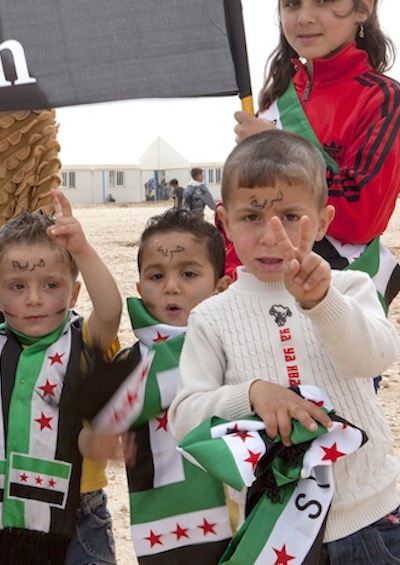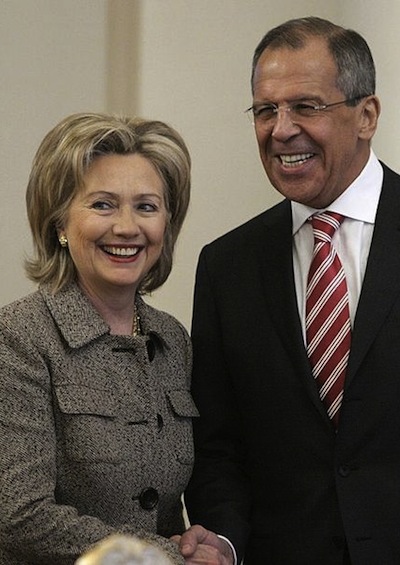Outside War: Syria’s Women and Children Carry On, Abroad
Photo Gallery: Scenes of life in the world’s second largest refugee camp.
May 4, 2014

Neca Dantas is working on a documentary entitled “The Aftermath of War Through the Experiences of Women and Children.”
She seeks to capture the human experience and everyday life of those affected by war, in hope that it will inspire people to take action and get involved.
For the photos in this gallery, she traveled to the world’s second-largest refugee camp, Zaatari in Jordan. According to the United Nations, Zaatari opened on July 28, 2012 and has grown exponentially ever since. It is co-managed by the Jordanian government and is temporarily the 4th largest city in the country.
This 8-year-old girl lost her right leg after a tank shell landed in her house in Daraa. She is receiving treatment at the Bader Center in Amman – a non-profit organization – for over six months. The center provides medical care and psychological support for children and women who are victims of war. She is waiting to receive a prosthetic leg.
Children with Syria Free Army flags at a rally against the regime during the revival of the civil unrest in Zaatari camp.
Most of the residents fled the chaotic violence of the war and scorched-earth policies of the Assad government. Many are openly sympathetic to the rebel cause.
Many media accounts suggest that the Syrian regime is approaching a decisive victory in the brutal civil war. Will the Syrian refugee children of the camps in find themselves permanently growing up in these “temporary” cities in Jordan, Lebanon and Turkey — like their Palestinian peers?
Muzoon is a 16 year old Syrian refugee from Daraa. She is a UNICEF Ambassador for Education in Zaatari camp. Working with the organization, her task is to raise awareness of the importance of going to school and getting an education.
This Syrian refugee is teaching English at an International Rescue Committee Women’s Center in Irbid, Jordan. In addition to psychological counseling programs, the center offers social activities, including English classes among others. It is a place where the women and children can meet others like them in the camp and learn some new skills.
The vast, monotonous expanse of the Zaatari refugee camp in Jordan. It is the second largest refugee camp in the world, with more than 100,000 Syrian refugees. More than half the population of the camp is composed of women and children.
Boys gathering in front of one of UNICEF’s school in Zaatari camp. To date, there are three schools operating in double shifts. Morning shifts are for girls and afternoon shifts are for boys. There are a total of 20,608 registered students.
One of the challenges to school attendance is that many families expect their children to stay home to help with household responsibilities, or even go to work. This is especially a problem among boys in the camp.

Neca Dantas is an editorial photographer and writer based in Los Angeles, CA. Her work has been shown in numerous exhibitions and publications in the United States, and it focuses on capturing moments that evoke the social and economic aspects of the world.
Takeaways
Photo Gallery: Scenes of life in the world's second largest refugee camp, by Neca Dantas.
If Assad wins the #Syria civil war, will refugees abroad live in camps permanently?
In addition to counseling, the refugee camp offers social activities, including English classes.
Zaatari refugee camp in Jordan has more than 20,000 registered Syrian students.
Author
The Globalist
Read previous

U.S.-Russia: Seeking Salvation in Sanctions
May 4, 2014





